I jerked awake in the passenger seat of Pi Pai’s Toyota Tiger pickup truck. The rutted roads into the Chiang Mai mountains traced a tantalizingly-close drop-off, but I trusted his abilities – he does, after all, commute from the city to the camp and back almost every day. We began to round an outward-curving bend; the jasmine flower garland swinging gently from the rear-view mirror, a symbol of Buddhist offering.
Pi Pai honked his horn three times, lightly brought his hands together in prayer and joined the tips of his thumbs to his third-eye center, purposefully between his eyebrows, all while remaining in control of the wheel.
On that particular day, one of the tourists was sitting in the truck cabin with us and Cheetah, Pi Pai’s son. “Why honk?” he inquired. I was quick to answer, “To warn oncoming traffic around the bend.”
“Usually, yes,” Pi Pai interjected, “But this particular curve is different. A few years ago, a bus full of 40-or-so students from Chiang Mai University went over the edge of this cliff. We must respect their spirits, the spirits who now live here. We must let them know that we are entering their space.”
Everyone in the truck paused in reflection, a more somber air than before, but with noticeable admiration of such sentiment. I was reminded of Thai spirit homes, of the students and teachers bowing with thumbs kissing the space between their eyebrows when they walk past the school’s spirit home – of the stories our student teachers have told us of battles waged on these grounds, of committed comrades laid to rest together on our school’s land so many years before the school was ever in the minds of locals. My thoughts meandered around Thai culture’s appreciation of elders, of history, and of spirit as I nursed a warm coffee and watched the mountains roll by.
For the past week, I had been volunteering at Into the Wild Elephant Camp, an opportunity of my wildest dreams somehow transformed into my current reality. Mornings began with the organization of tourists within the Old City of Chiang Mai. At 6:30 am, Pi Pai would meet me at Hug Hostel, a partner of Into the Wild camp where I was so generously given accommodation free of charge during my ten days of volunteering. After arranging the camp visitors at Hug, we’d pick up other tourists who had registered through their respective city-center hostels for our 1.5-hour commute to the camp.
Every morning, we’d stop at the market for breakfast halfway through the drive – a night-and-day difference in transportation culture compared to the US, where the focus is largely placed on arriving at the destination as soon as possible. Through bus trips around the country, work trips in private vans and traveling with Pi Pai and other friends, I’ve become accustomed to the leisurely “we will arrive when we arrive” attitude. As is also true figuratively of Thai culture, people here generally choose to enjoy the journey.
I’d hop out of the pickup and make my way to the tailgate to greet the day’s tourists and distribute Into the Wild’s woven shirts, handmade by local hill tribes. The elephants have been trained to recognize the shirts as worn by non-threatening guests, an effort to help the elephants stay calm with so many unknown visitors.
After orienting the group, I’d commence my rounds – first to the 7-11 across the street for soymilk and a banana, then to the coffee nook back on the truck’s side of the street, offering my soymilk to the kind-eyed barista for it to be warmed with espresso. He owns the small shop with his mother, an equally genial spirit. I returned every day with the same requests, and toward the latter half of my volunteering days, the benevolent barista charged me less.
Next, I’d venture to the market, tucked off a side street behind where we’d parked. There I’d find Pi Pai, picking up the lunch order for the camp-goers and joining my walk back to the truck. On several mornings during these customary detours, I’d connect with visitors who were always inquisitive of my involvement with Into the Wild and what exactly I meant when I said, “I live in Thailand.” I met travelers from all over the world, though mostly from the West – tourists from Brazil, America, Canada, UK, Germany, Ukraine, and Sweden – all sharing aspirations to connect with the majestic spirit of elephants.
On my first weekend at the camp, Pi Pai spoke with me privately.
“Our mahouts spend everyday training and bonding with these elephants. Since you only have around ten days to spend here, I want you to direct your energy carefully. The elephants can become jealous and possessive, so consider one elephant in particular with which you’d like to develop a closer relationship.”
Elephants remember who you are primarily by your scent and the sound of your voice, so Pi Pai asked me to talk to the elephant I chose as often as I could, and not to wear any sunscreen or bug spray. An elephant’s skin is very thick, he said, so gentle touch feels to them like nothing more than an annoying mosquito. Don’t be afraid to pat them hard.
He asked me to pay close attention during the first tours on which I accompanied him, particularly to the speech he gave before allowing the groups to approach the elephants closely.
Like many other nonprofits in Thailand, learning English has become essential for Into the Wild to establish a presence among foreign visitors. At least twenty minutes of each tourist visit is dedicated to the history of elephants in Thailand’s culture. The involved vocabulary, however, is not shared by all staffers. The majority of communication responsibilities are directed toward Pi Pai or Pi Siwa, the managers and most fluent of the English-speaking guides, resulting in very few days off.
I picked up on Pi Pai’s enlightening dialogue fairly quickly; around halfway through my time with the sanctuary, I began helping to lead the tours. At first, Pi Pai sat beside me and helped me to fill in the gaps when I left anything out, but by the end of my ten days, I was able to take care of the group on my own, freeing Pi Pai to manage other responsibilities.
On this particular day, a couple from Spain joined our group and immediately exposed how rusty my Spanish speaking abilities have become after a four-year intermission. Once I completed my Spanish language minor in university, my focus drifted to other studies and my Spanish practice fell behind. Not to mention being fully immersed in the Thai language for the past ten months!
I was proud of my composure when presented with the challenge to simultaneously cater to a group of English tourists, a German family with low-level English proficiency, and a Spanish couple who spoke no English past “hello” and “thank you.” Thankfully, I was able to communicate important safety points.
Imagine you’re a tourist visiting the sanctuary. You’ve just arrived at the camp, trekked down the steep clay mountainside and sauntered across the log bridge over the river. You’d have greeted the elephants briefly – as soon as the baby, Piang Dao, sees Pi Pai, she is running over to meet him, followed closely by protective, 35-year-old mom, Wong Duan. You’ve been welcomed to a large, open-air, elevated patio area, the majority of which rests against the solid mountain slope, and the other supported by wooden pillars and bamboo floors.
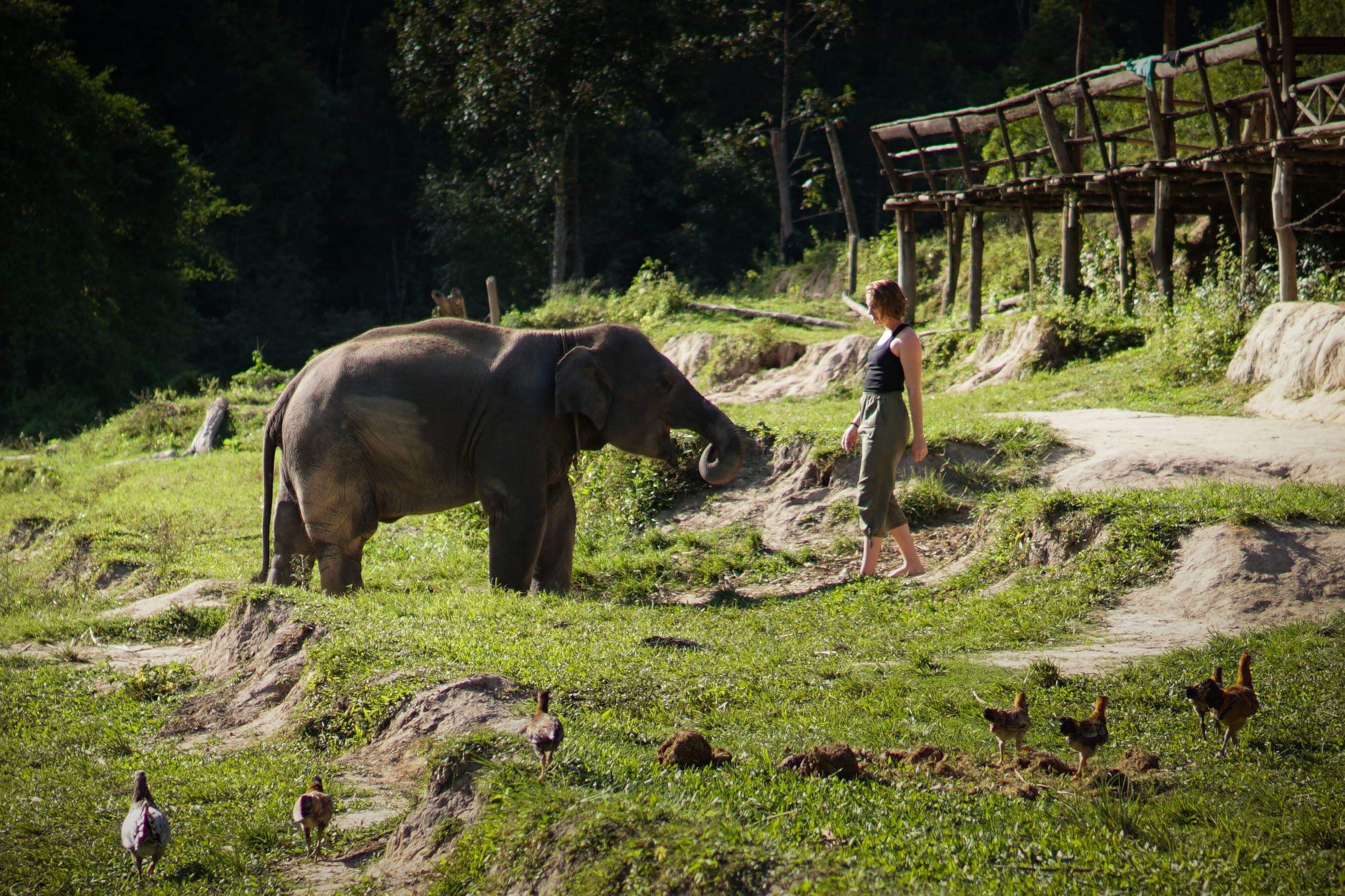
From here, you can see the whole camp: the mahout living quarters decorate the length of the hillside east of the pavilion, resting higher on the hillside than the washrooms; the laundry line that the playful younger elephants love to run through and dismantle; the area of grass and mud just beyond the pavilion’s solid railings and the river winding further beyond that.
The camp is nestled between three mountains among which the four elephants freely roam and feed. The gentle giants eat bark, tree branches, bamboo, roots, leaves – practically anything that’s plant-based and high in fiber. As vegetarians, they are even careful to shake any bugs hanging around on their plants before eating.
When you see an elephant standing, feet weighing heavily into the ground, you would not expect the ease with which such a colossal being traverses up tricky mountain slopes, somehow nonchalantly avoiding all slips amidst the muddy pathways, otherwise avoiding the pathways altogether. Witnessing an elephant’s dexterity and poise while climbing up a mountain, all the while struggling to keep up behind it, is still somehow inferior to your ears taking in an elephant’s roar only ten feet away. It’s like nothing you’ve ever dreamed, a mighty lion’s chilling roar disguised in an elephant’s body.
The river winds just ahead of the mountain to the south, its cloudy ripples reflecting twice-a-day mud baths. The mountain to the north huddles over the pavilion and mahout residences and, completing the triangle, the river flows east toward the third mountain.
One day, I was taking a morning group on a hike with the elephants. It was a brutally hot day and three out of the four elephants had waded into the refreshing water. Four large boulders offered themselves as stepping stones through the serene surface. Luckily, my valuables were left at the pavilion because – no surprise here – I slipped right into the brumal waters, wearing the river from head to toe, unharmed and endeavoring to laugh it off.

Photo by Nattakit Meesakul 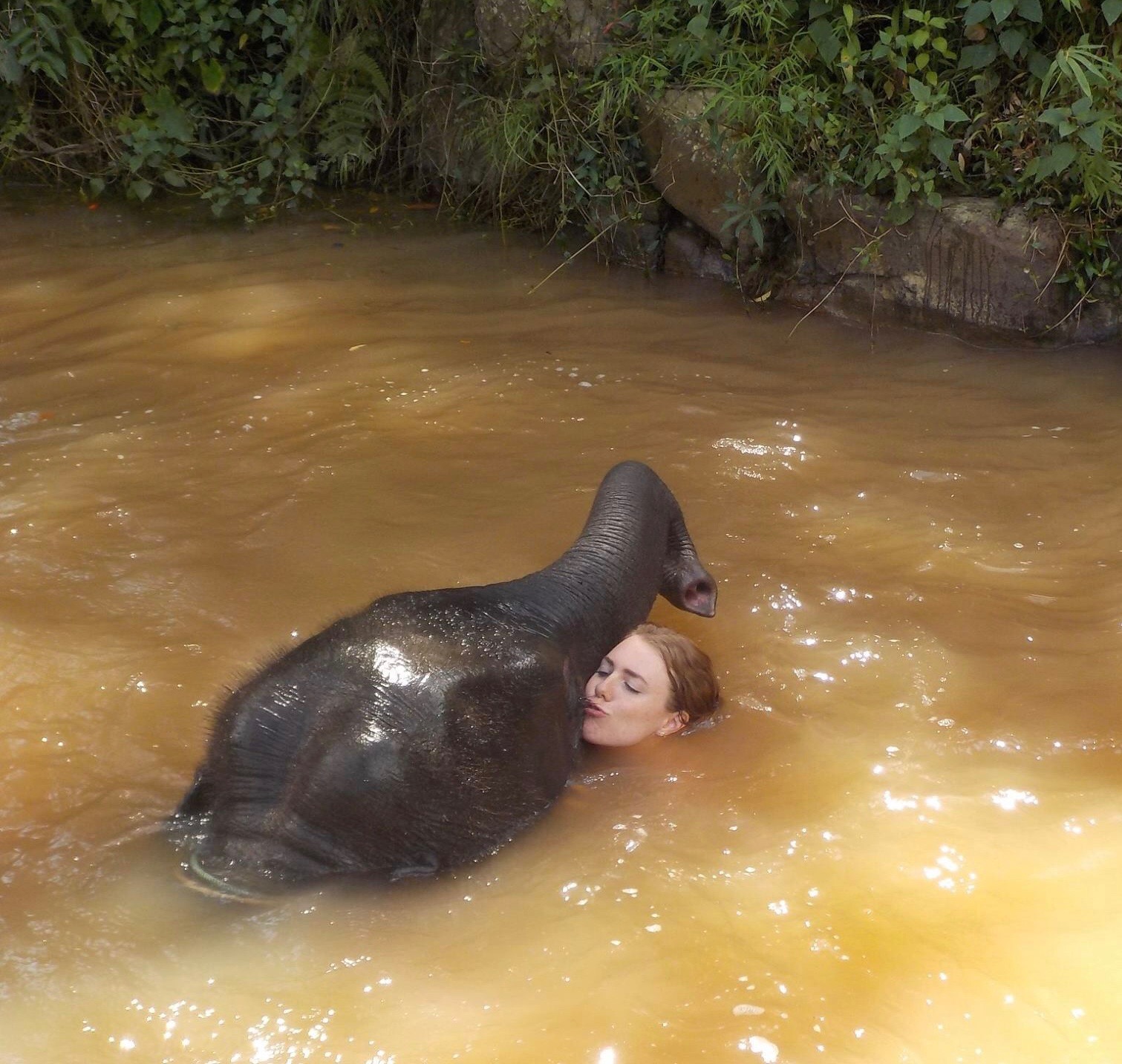
The sanctuary is three years old and home to four female elephants – two in their late 30s, Wong Duan and Mohkay, and two toddlers, Piang Dao and Ahjar. The camp purchased Mohkay to rescue her from the logging industry and Wong Duan to rescue her from tourism-riding. Mohkay has an exhausting past to recover from – she’s the calmer of the two adults, seeming to care much less about any drama and much more about the nearest banana stash.
As the strong and sassy mother to three-year-old Piang Dao, Wong Duan is not afraid to have a protective attitude, especially around new additions. Ahjar, the camp’s four-year-old, was brought to Into the Wild in August 2018 from a camp near rural Tak, Thailand that couldn’t afford her care (Tak isn’t exactly the star attraction on mainstream tourist routes, so the aspiring sanctuary could barely remain afloat). She’s calmer than Piang Dao, loving and eager to be part of the family, though the feelings are not always reciprocated from Wong Duan.
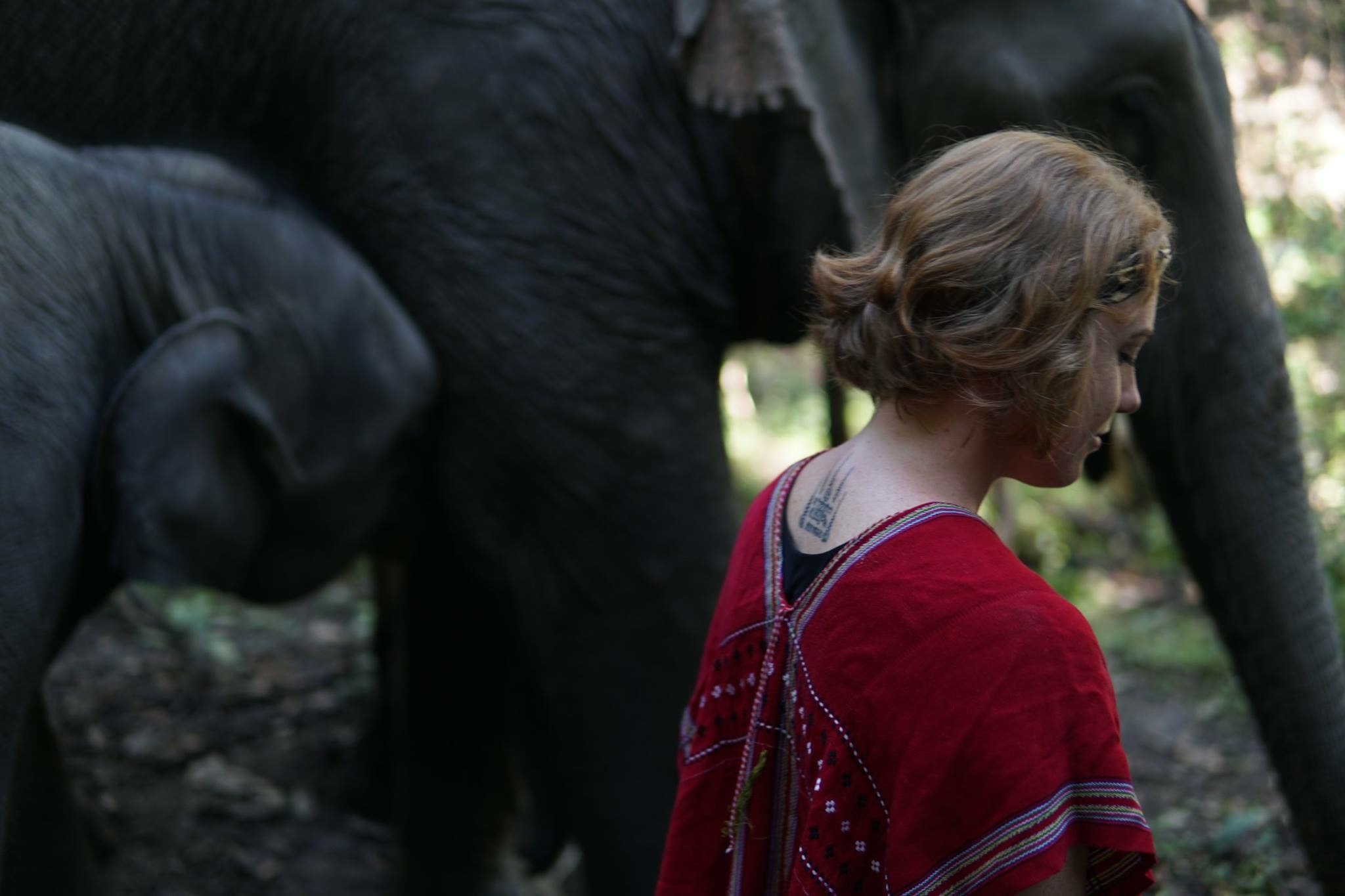
Elephants have historically been beloved and claim the title of Thailand’s national symbol. They are said to possess the highly-revered characteristics of the Buddha: strength, patience, tranquility, loyalty, and wisdom. White elephants, in particular, are associated with Thai royalty.
Thai kings were known for offering white elephants as gifts to their rivals, but because white elephants are considered sacred, they could not be put to work or made useful in any way – the “gift” was a major responsibility in disguise, a true burden for the recipient country. (When we exchange gifts in a White Elephant game, the idea is that we are passing the burden we are holding to another’s hands.)

Photo by Nattakit Meesakul 
Photo by Nattakit Meesakul 
Photo by Nattakit Meesakul
Elephants have deep roots in almost all aspects of Thai culture and have thus developed a complex relationship with their people. Like domesticated horses in the West, elephants are passed down through the family business, their strength utilized as a source of income.
The average weight of a male Asian elephant is around six tons; the average weight of females, around three tons. Their enormous size, strength, and tough skin lead to elephants playing a vital role in the development of Thailand, particularly through logging. Teak wood supply, largely concentrated in Southeast Asia, was in high demand from the West. Elephants were put to work carrying enormous logging loads with their tusks and trunks – an arduous job that sometimes lasted more than twenty-four hours before rest.
After thousands of years used in construction, transport, and war – the backbone of the logging industry, forced to the front lines of battles, only to be championed and adorned with the finest gold and jewels at the next festival – a futile government attempt to mitigate the deforestation crisis jarred the country, the 1989 logging ban.
All logging licenses in natural forests were revoked in 1989, effectively banning commercial logging. Government bans tend to cause omnishambles like illegal logging and exportation, particularly when the economies of neighboring countries like Myanmar have been described as suffering from “institutional corruption on a huge scale.” Elephant working conditions worsened as their jobs transformed into illegal exportation on the dangerous Myanmar border.
As Pi Siwa explained this history, delighted by my “wow”s and “really?”s, I was reminded of my fiercely libertarian brother and the lengthy debates we used to have about government interference regarding environmental protection. I advocated for NGOs – something we could agree on – but had a hard time agreeing with his optimism that privatization meant people would do the right thing. His arguments always centered around one thing, though – the “be careful what you wish for” adage, the precautionary attitude that the resulting consequences might not be pretty. Those are exactly what I am witnessing in Thailand.
While there aren’t many “unemployed” wild horses desperately roaming the cities and suburbs of the United States, this situation is now commonly life-threatening for Thailand’s elephants. Relentless deforestation has pushed elephants to beg through the streets for food – which sometimes means hungry, four-ton beasts looting, ransacking, and endangering townspeople. Just last week, another elephant was killed in act of self-defense.
Pi Pai likes to ask visitors, “How many of you chose this sanctuary because you saw advertisements for ethical treatment and no riding?” at which point everyone present will raise their hands, awarding themselves, though still oblivious to much of the backstory.
After the logging ban, overcrowding of the few available sanctuaries escalated as elephants were suddenly unemployed. Tourism in Thailand started to rise around the same time, and with elephant riding’s deep roots in Thai culture, interest and demand among tourists presented a more ethical alternative to both boost Thailand’s economy and care for elephants.
“Of course, we are glad you chose Into the Wild, but it’s important you understand that ethical treatment and elephant riding are not mutually exclusive practices – as an integral part of Thai history and culture, riding can be both ethical and beneficial to the relationship between mahout and elephant.”
Into the Wild hires members of local hill tribes to serve as traditional elephant mahouts. Serving as a mahout is an esteemed duty; though a perilous responsibility that pays very little, committing yourself to care for the revered, divine animal is considered an act of merit.

When a mahout rides an elephant, particularly bare-back, the trust between the pair is unmistakable and verbal cues are always part of the effort. The relationship between caretaker and caregiver becomes clear as the elephant submits full control to the riding mahout. This practice has been particularly useful to many local hill tribes – just as horseback riding is useful in the Western hemisphere, especially in the more rural areas.
On my second-to-last day at the camp, a rutilant afternoon, Pi Siwa asked me if I wanted to ride Mohkay. My nerves immediately convinced my brain that my stomach had become lopsided, but there was no time to be nervous.
Pi Oot, Mohkay’s mahout, had already begun guiding Mohkay to kneel on the ground. This majestic, incredible giant was kneeling down for me to mount her neck just by Pi Oot’s verbal commands. I will never forget the awe of this moment, as I used Mohkay’s knee as a stepping stone, gently grabbing her ears and attempting to tuck my flexed feet behind them.
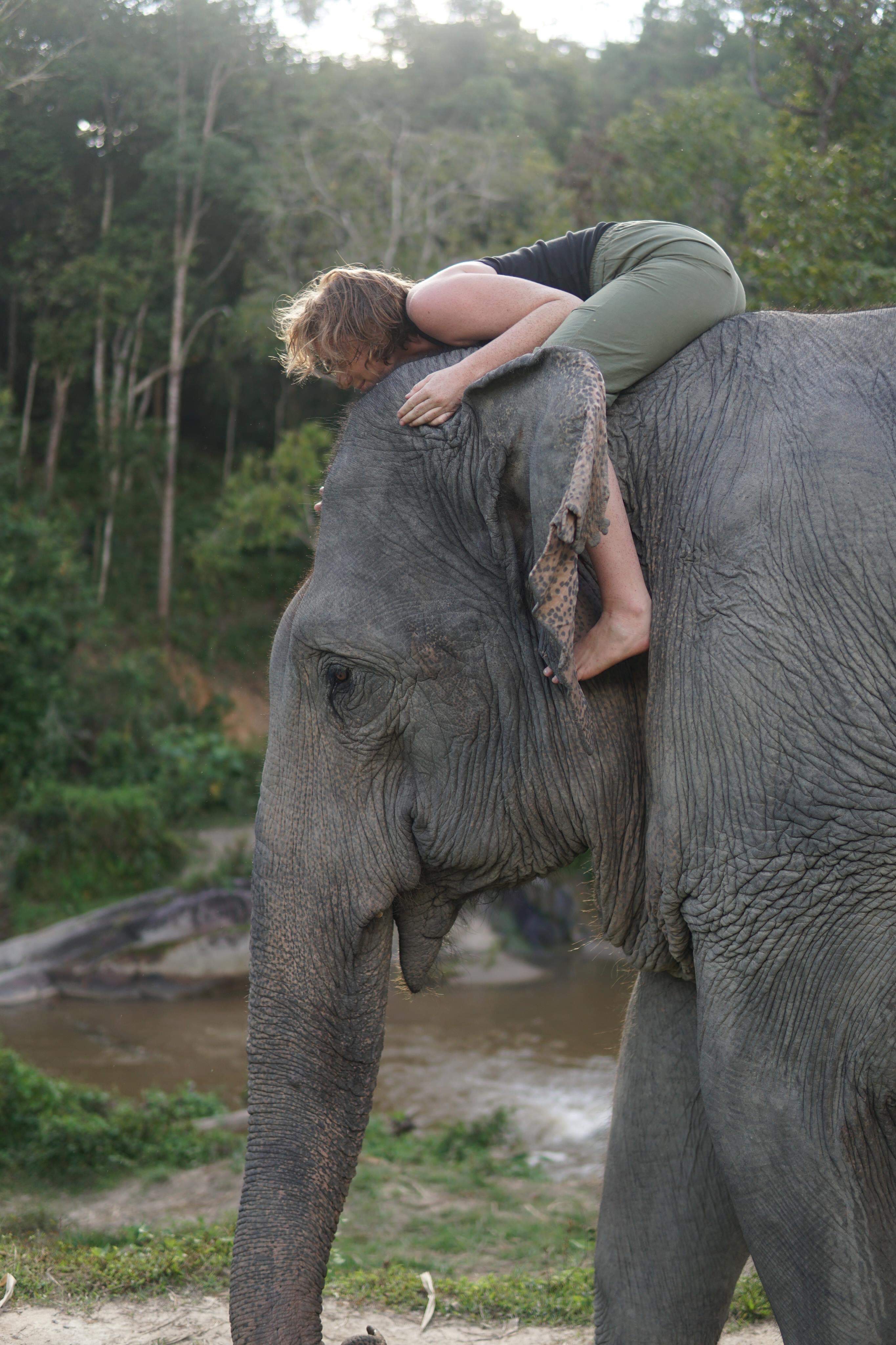
Straddling Mohkay, breathing eight-foot-high fresh air, resting on this herculean, miraculous presence – sitting upright was an effort I could only maintain temporarily; the rest of this experience was spent hugging Mohkay’s crown, feeling like I was about to fall over, to slide down her trunk to the rocky pasture below, but trusting that I felt like no more than a gentle pendant to Mohkay, one she would safeguard under Pi Oot’s watchful eye.
After my time spent at the sanctuary, I came across a post while scrolling through social media that said, “Animals belong in the wild.” I laughed at myself, recognizing that I used to be one of those people who defended that statement against all costs.

The unfortunate reality finds that this idealistic wild no longer exists. The wild we all like to imagine in our minds, with open spaces, fresh air, endless habitat and access to food is shrinking more with each day, too threatened by poachers or by other territorial animals also feeling the sting of deforestation and resulting displacement, with the absence of natural biodiversity eliminating species by the minute.
With insufficient food to feed the inhabitants still struggling to get by. With male elephants killing each other in territorial rage over the lack of space. With the threat of illegal trafficking, not just of animals but of their delicacies, like ivory. With trophy hunting somehow becoming less terrifying of a threat than the changing climate itself. With international governments that refuse to acknowledge the impending, self-induced existential threat of climate disaster because their hands have a liking for the pockets of billionaires.
It’s easy to point fingers until the fingers are pointing at you.
We don’t want to accept that our day-to-day greed and materialism has an impact on far-off jungles. That the beautiful teak furniture that decorates your breakfast nook could have been the resulting accomplice in hundreds of deaths. That the meat we are eating for dinner (or if you’re an American, every meal) is the leading cause of climate change.
But we are willing to believe social media posts that twist the story in ignorance, demonizing elephant riding in its entirety.
If we want to address our subconscious ethnocentrism, however minimal, we must first pick apart what we have already assumed to be true of our own practices. Until we turn our moral gaze inward, and until we endeavor to understand the history of other cultures, we are not entitled to the judgment of foreign practices.
If we want to help the situation, the solution is not searching for an elephant sanctuary that advertises “no riding”, visiting once for social media photos of a lifetime, satisfied with a so-called ethical use of your money. The solution involves looking at your part within the bigger picture and challenging yourself to evaluate things your ego wants to avoid. One purchase during your trip abroad helped a greater cause – but what about the thousands of purchases you make from home every year? Where is that money going and who/what is it impacting? Is it palm oil plantations?
Pi Jaran has a Santa belly and a pookah-shell necklace. He was raised close to Into the Wild, belonging to a local tribe, whispering secrets of elephants and traditional herbs. He is always jocund and never hard to hear.
“Uranon!” Apparently, there’s a Thai celebrity named Sam Uranon. Pi Jaran thought it’d be funny to drop the part that’s my name. “They’re afraid of the spiders. Come show them how it’s done.”
I walked over and took the feather-weight, harmless arachnid onto my hands, allowing it to climb up my arms and finally onto my face, giggling as its fairy feet tickled my skin, humored by my partially disgusted, partly impressed audience.
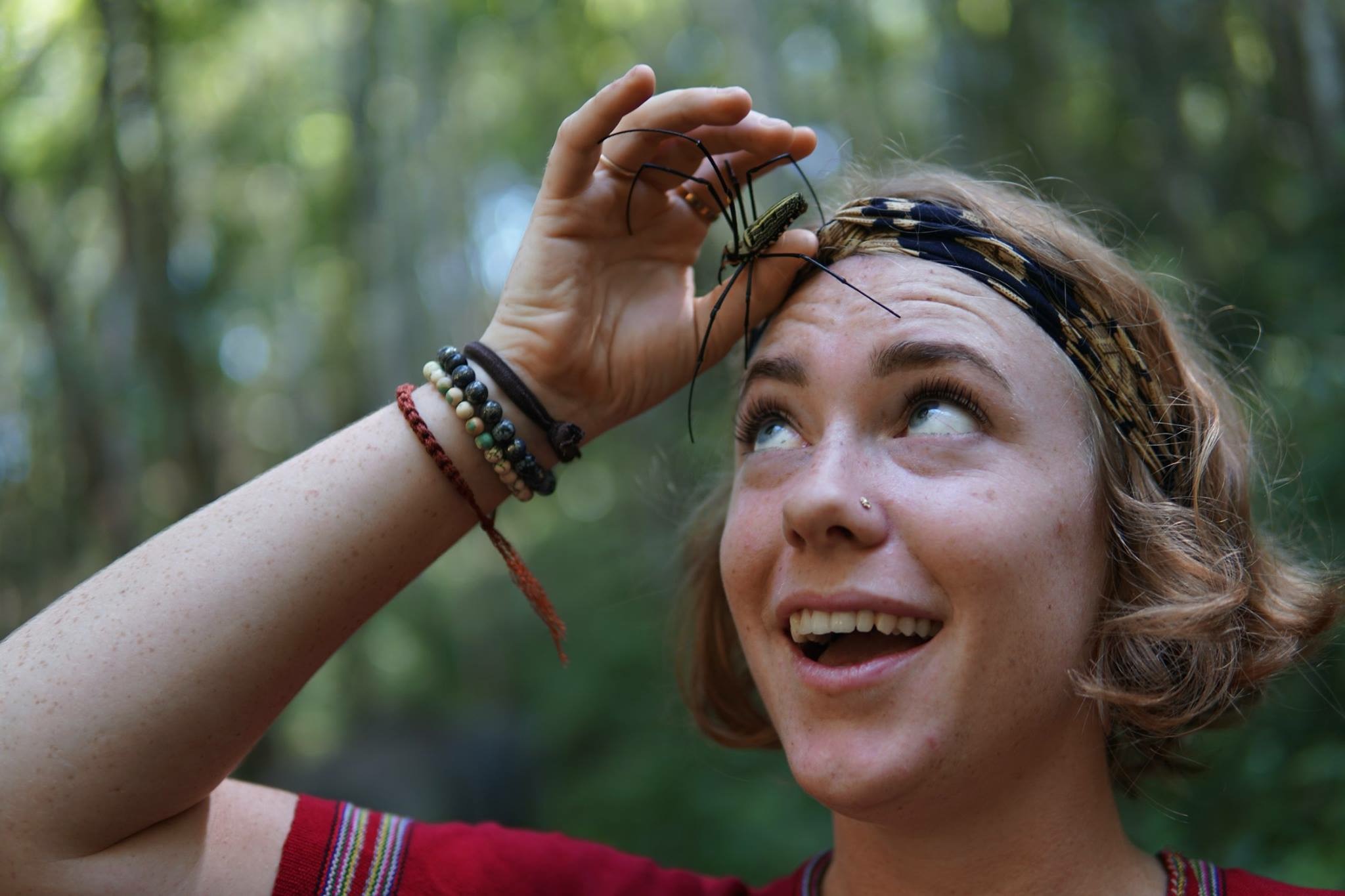
Photo by Nattakit Meesakul 
Photo by Nattakit Meesakul 
Photo by Nattakit Meesakul
“Now for the grand finale!” Pi Jaran retrieved the spider delicately, hung it over his open mouth in a moment of suspense, and dropped the palm-sized spider, closing his lips and fighting laughter. After what felt much longer than a few seconds, he released his captive, who scurried first to Pi Jaran’s chin, then to his hand.

I never thought I’d be decorating my face with spiders and mud, or staring deep into an elephant’s eyes as if I could will her to love me back.
On my last afternoon, I turned to my friend Max, one of the camp’s photographers. I was resting my forehead against Ahjar’s, the spunky toddler I’d chosen to bond with. “Do you think she loves me?”

“She hardly gives anyone else the patience she gives to you. When I try to rest on her like that, she walks away. She lets you hug all over her whenever you want. She loves you.”

Photo by Nattakit Meesakul 
Photo by Nattakit Meesakul 
Photo by Nattakit Meesakul
I had one week left of school vacation. The idea of saying goodbye to the halcyon home and my favorite one in it made my heart heavy, but a heart cannot be full without feeling the weight. I still had a goal to accomplish, my motivation for which became my succor. There was, after all, a place I was headed to that gifted me with this entire adventure in the process. The next day, I set off toward the mountains of Mae Hong Son, en route to Wat Pah Tam Wua Forest Monastery, enchanted by the rolling fields of corn husks that brightened my journey.

Photo by Nattakit Meesakul 
Photo by Nattakit Meesakul 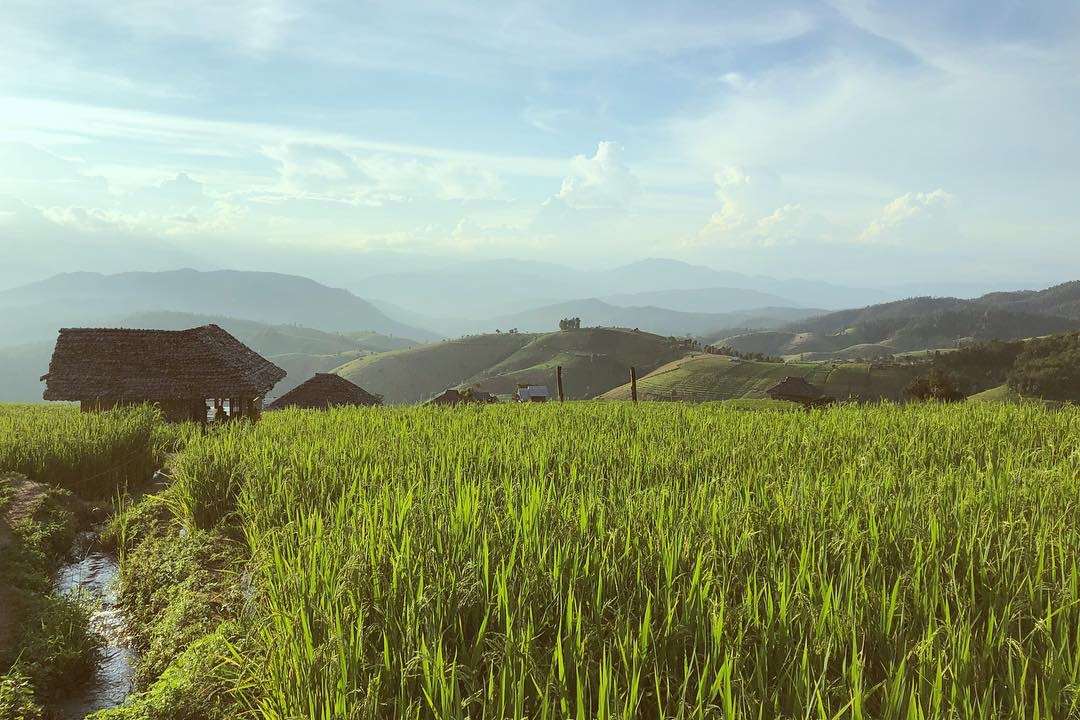
Photo by Nattakit Meesakul 
Photo by Nattakit Meesakul


I’m so happy to view your dreams from your perspective.
Thank you for sharing your thoughts
I Love you.. 🤗😘🤗
LikeLiked by 1 person
If we would practice the ” Budda characterists ” we could truly appreciate the gift of life and your ability to put it into words is getting better with each blog. Thanks for sharing with us.
PapPaw
LikeLiked by 1 person
Sam- I am always in awe (and a bit envious) of your ability to convey many of the lessons that I often find myself trying to explain to friends and family, but fail to find the right words to do so. Your description of your experience supplemented with the explanation of the balance between ethical elephant practice and survival, and so many other important topics like nature conservation is so elegantly intertwined and beautifully written. As always, thank you so much for sharing. I miss you and hope you are well 🙂
LikeLiked by 1 person
Very good writing Sam. ‘Puts the reader right there with yourself and the elephants every step of the way, along with your educating on what the impact of deforestation has on Thailand’s elephants and other animals.
‘Very cool, very enjoyable.
LikeLiked by 1 person